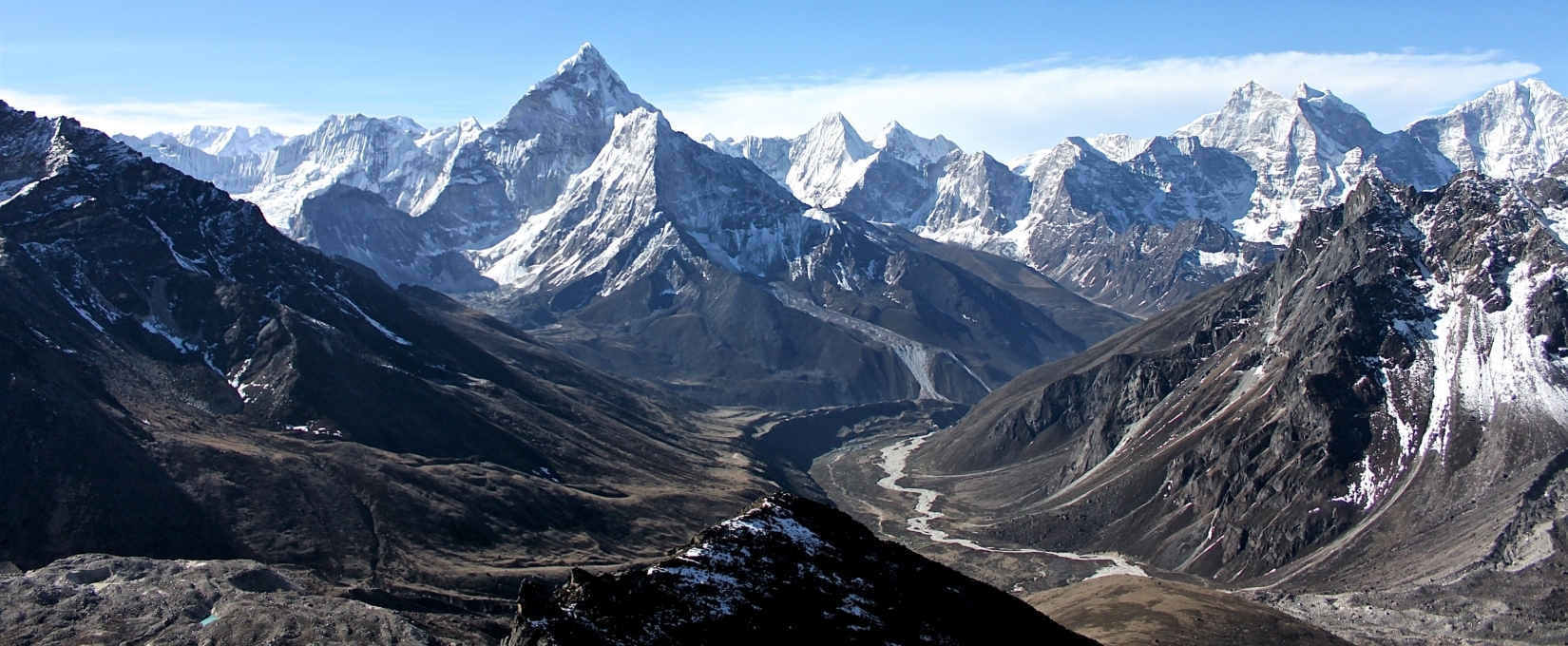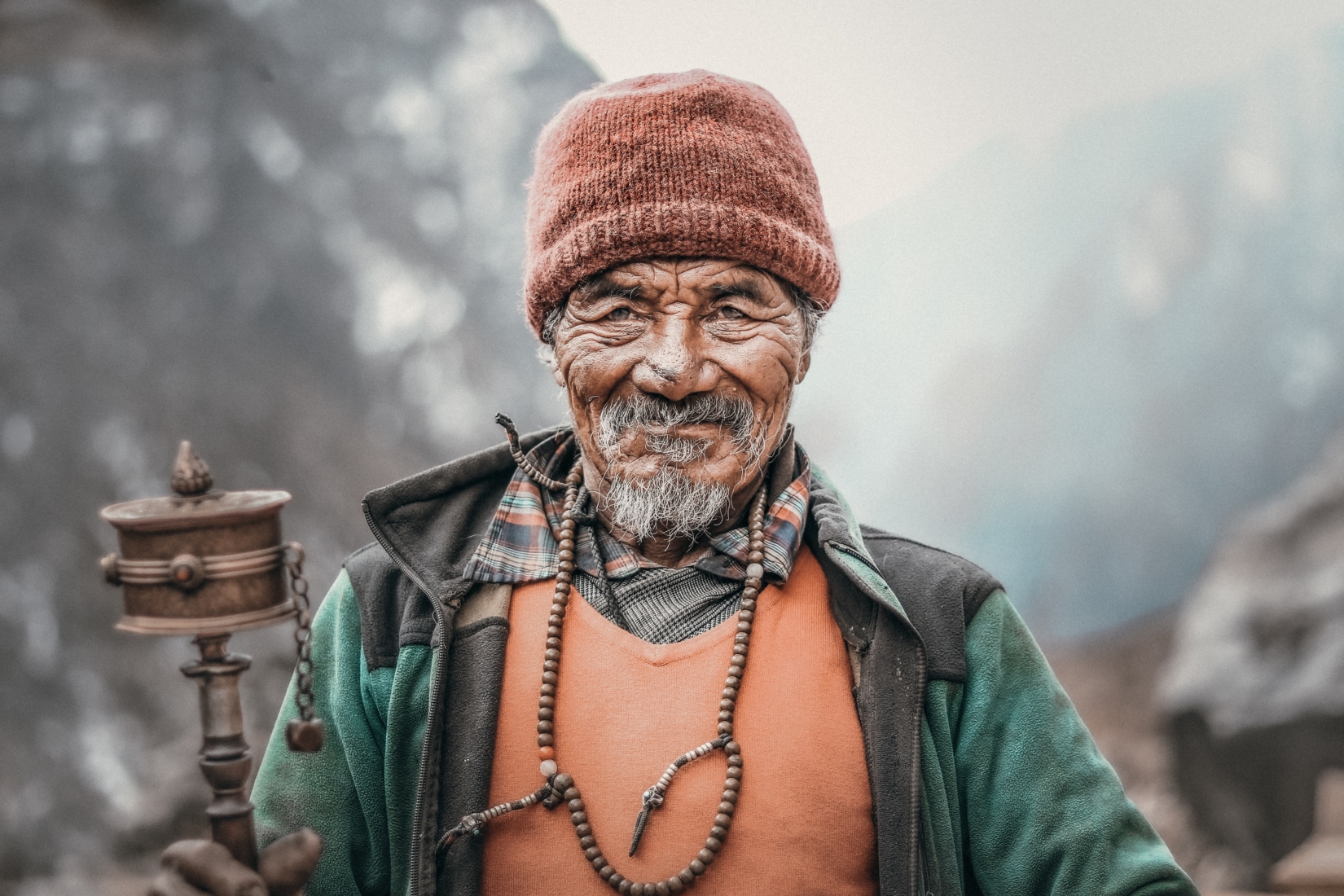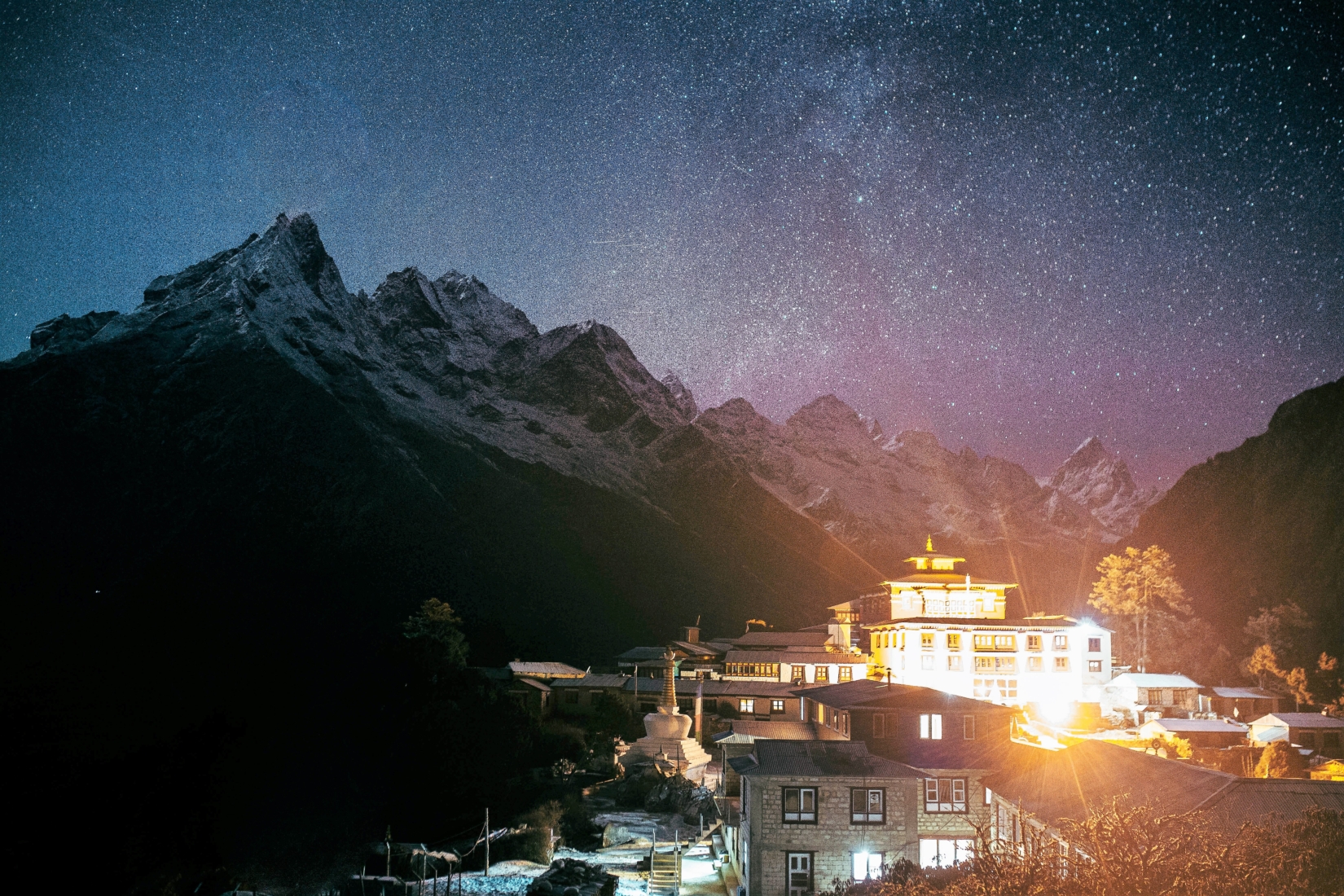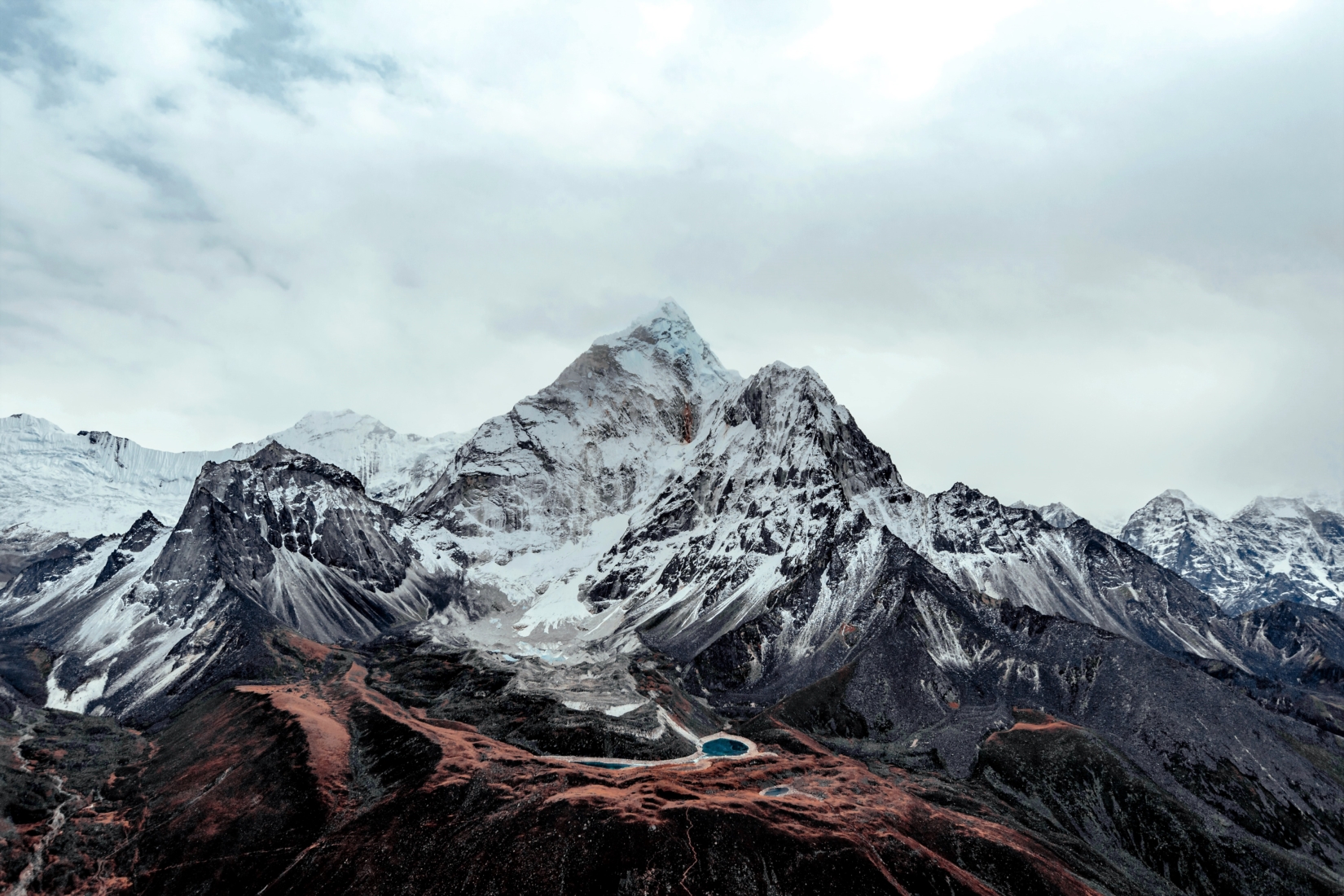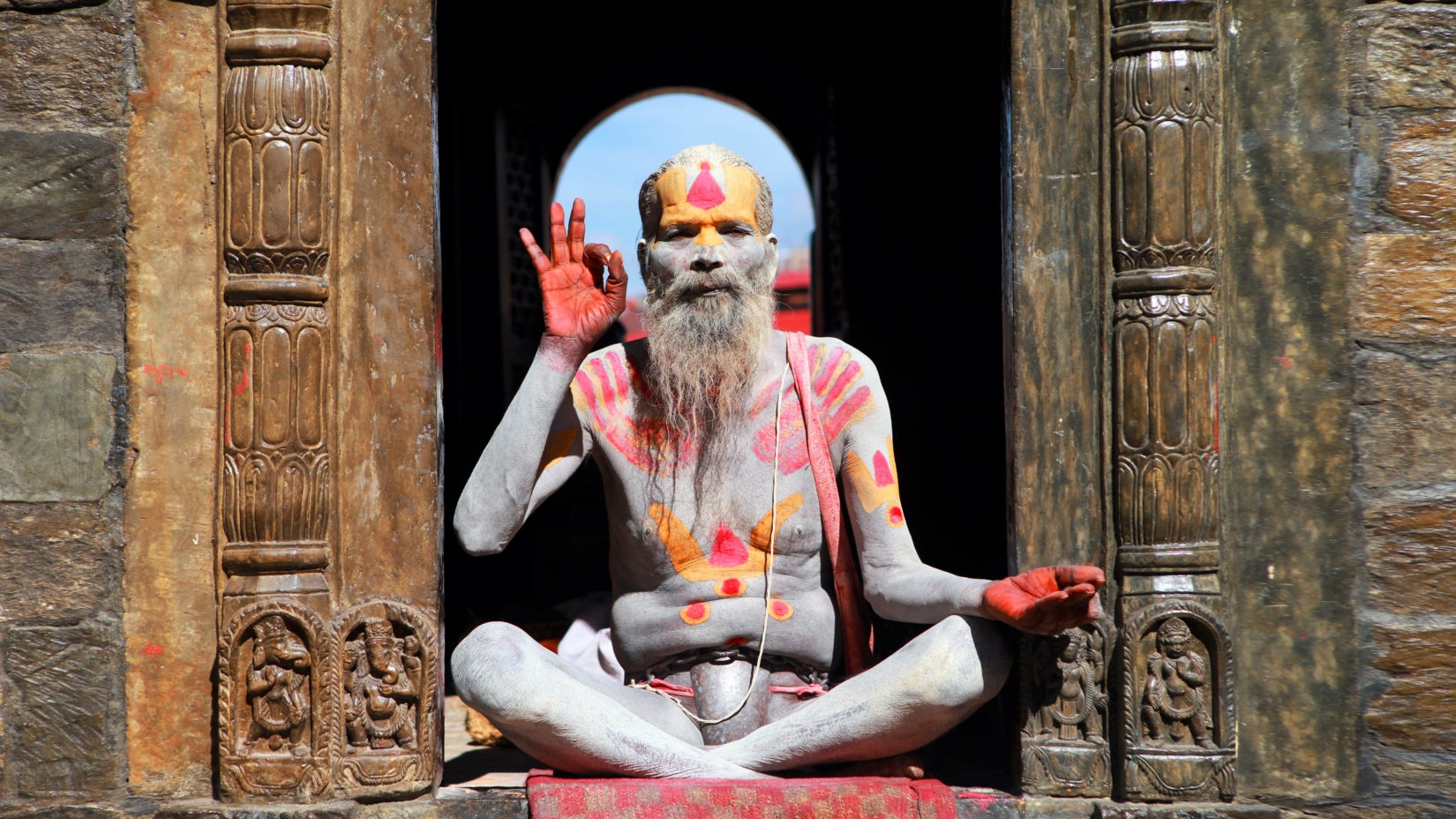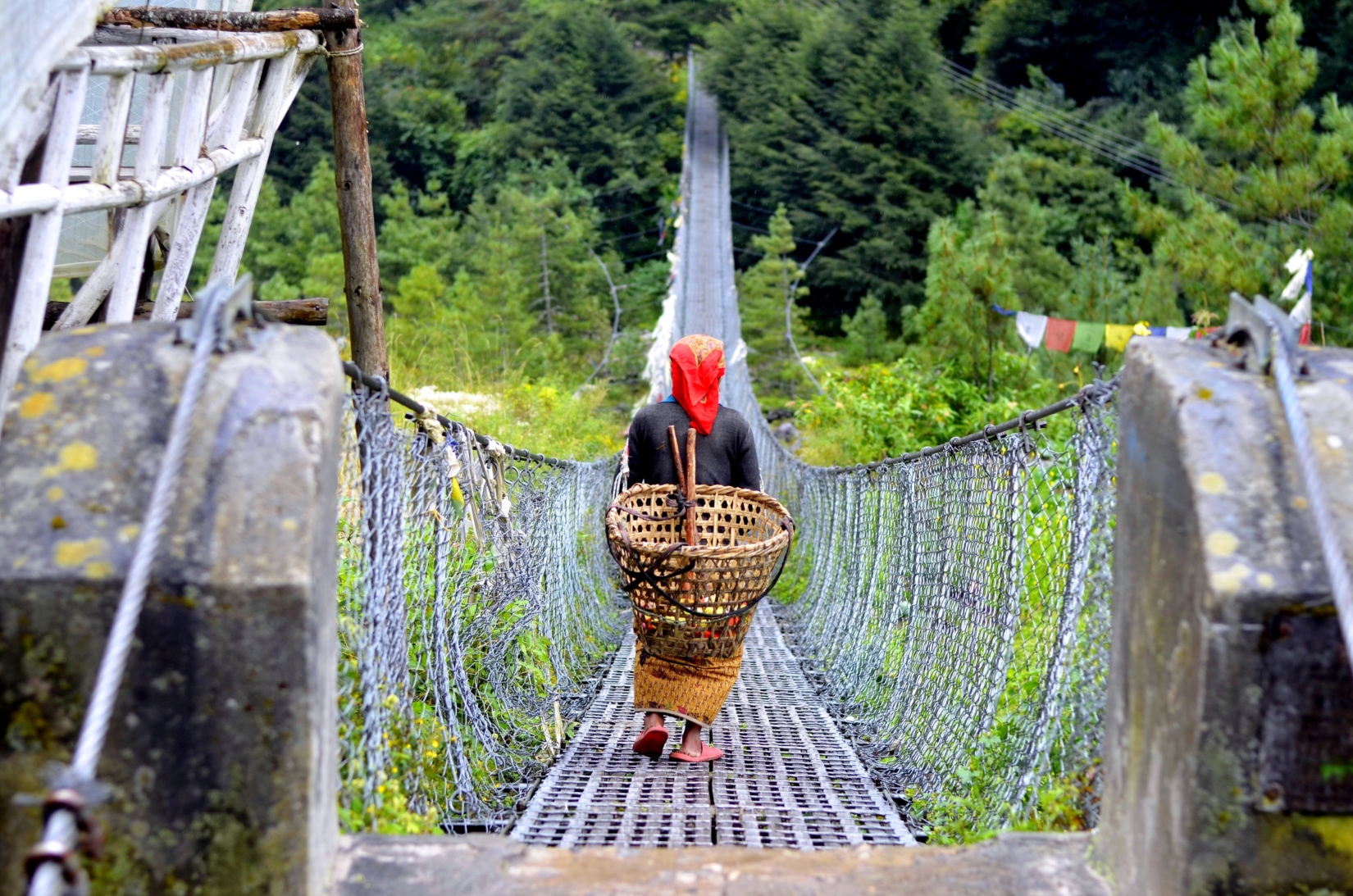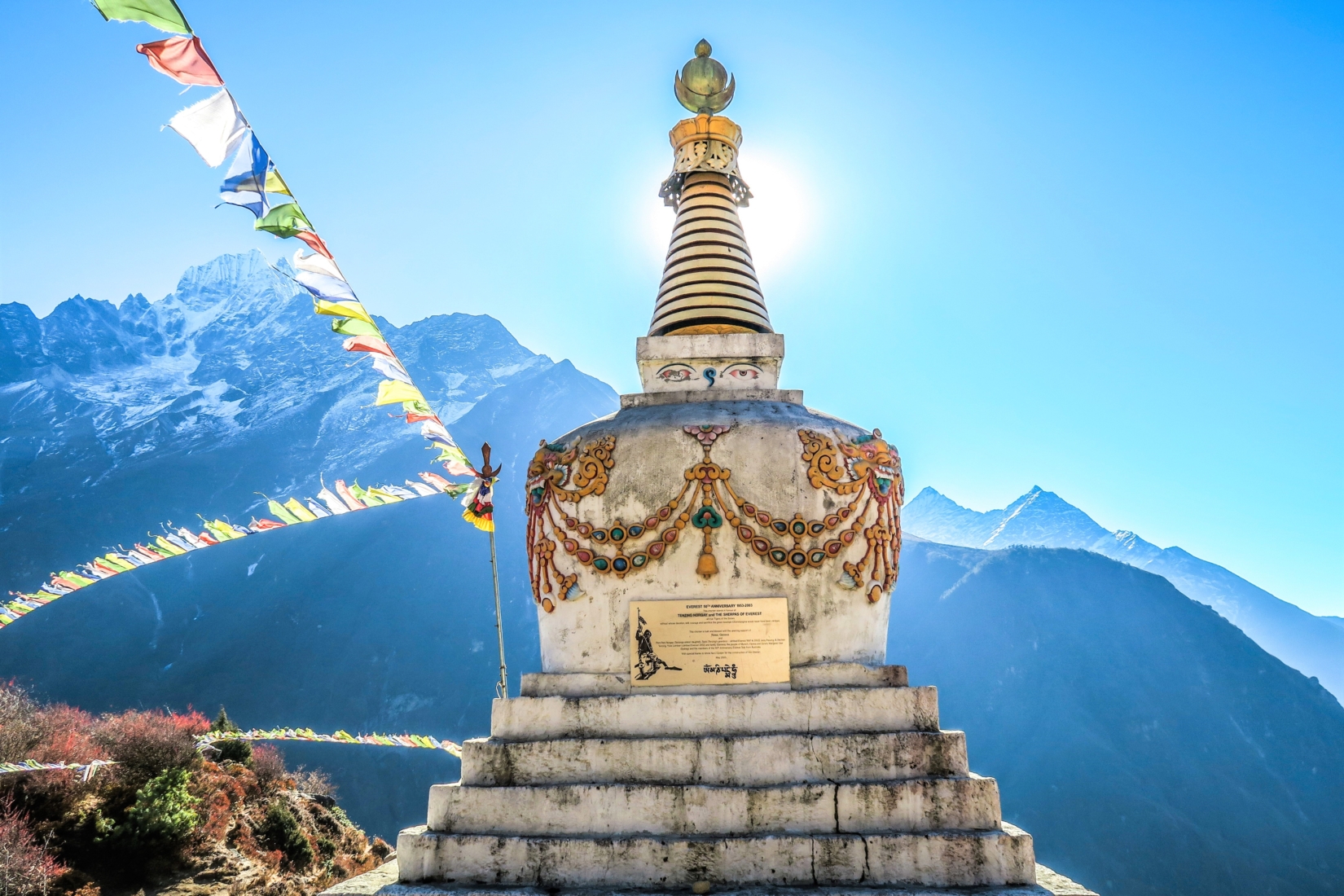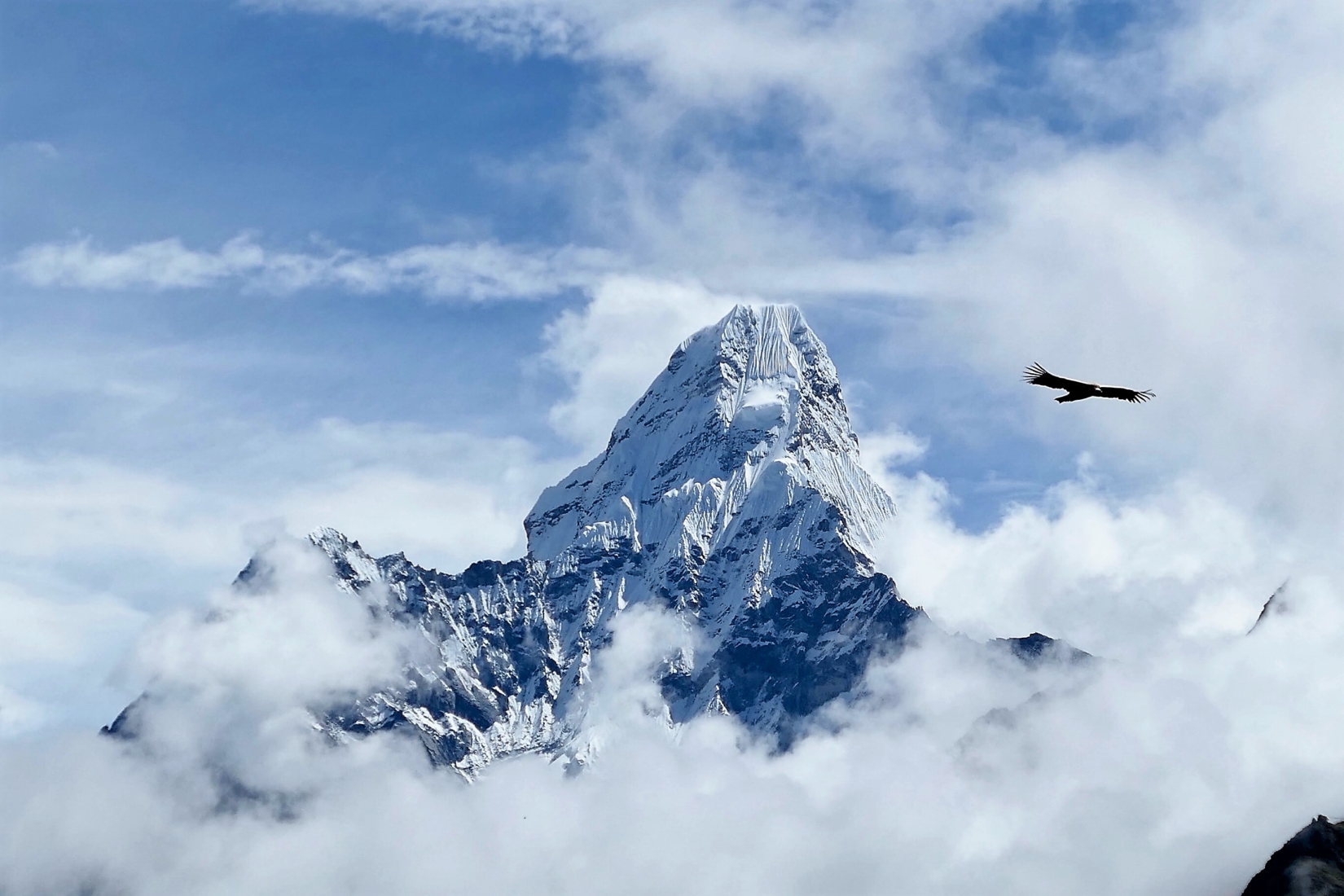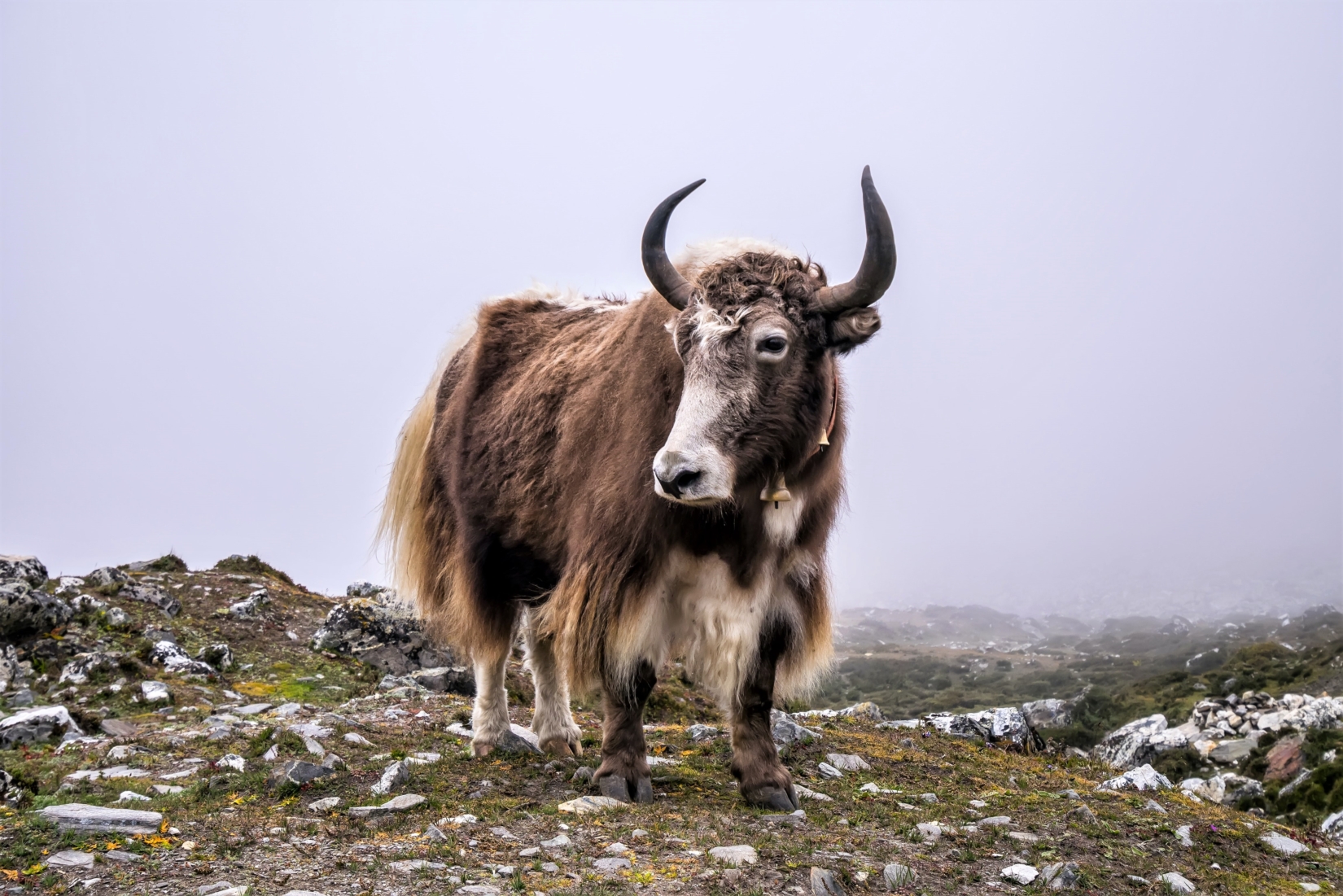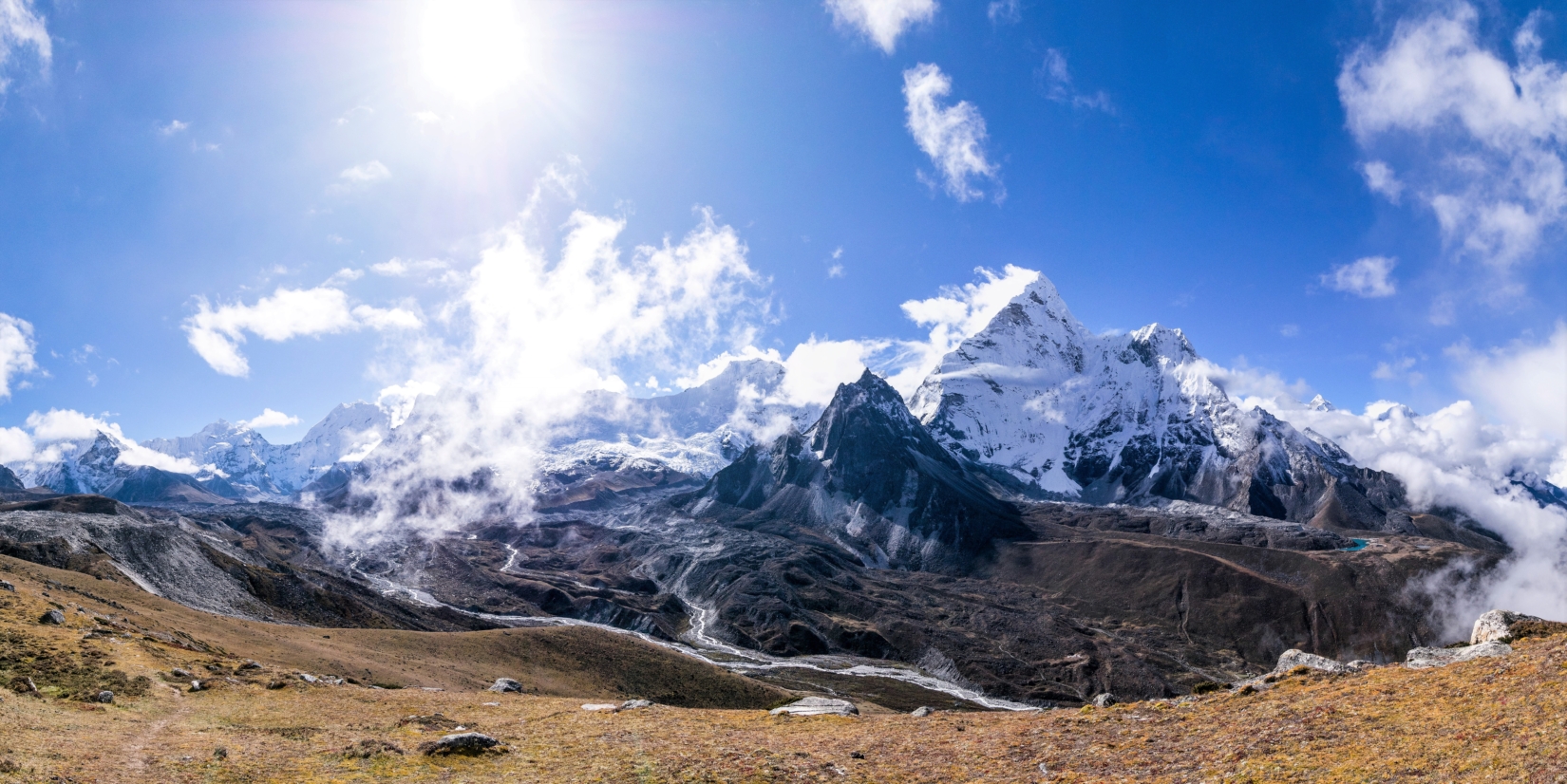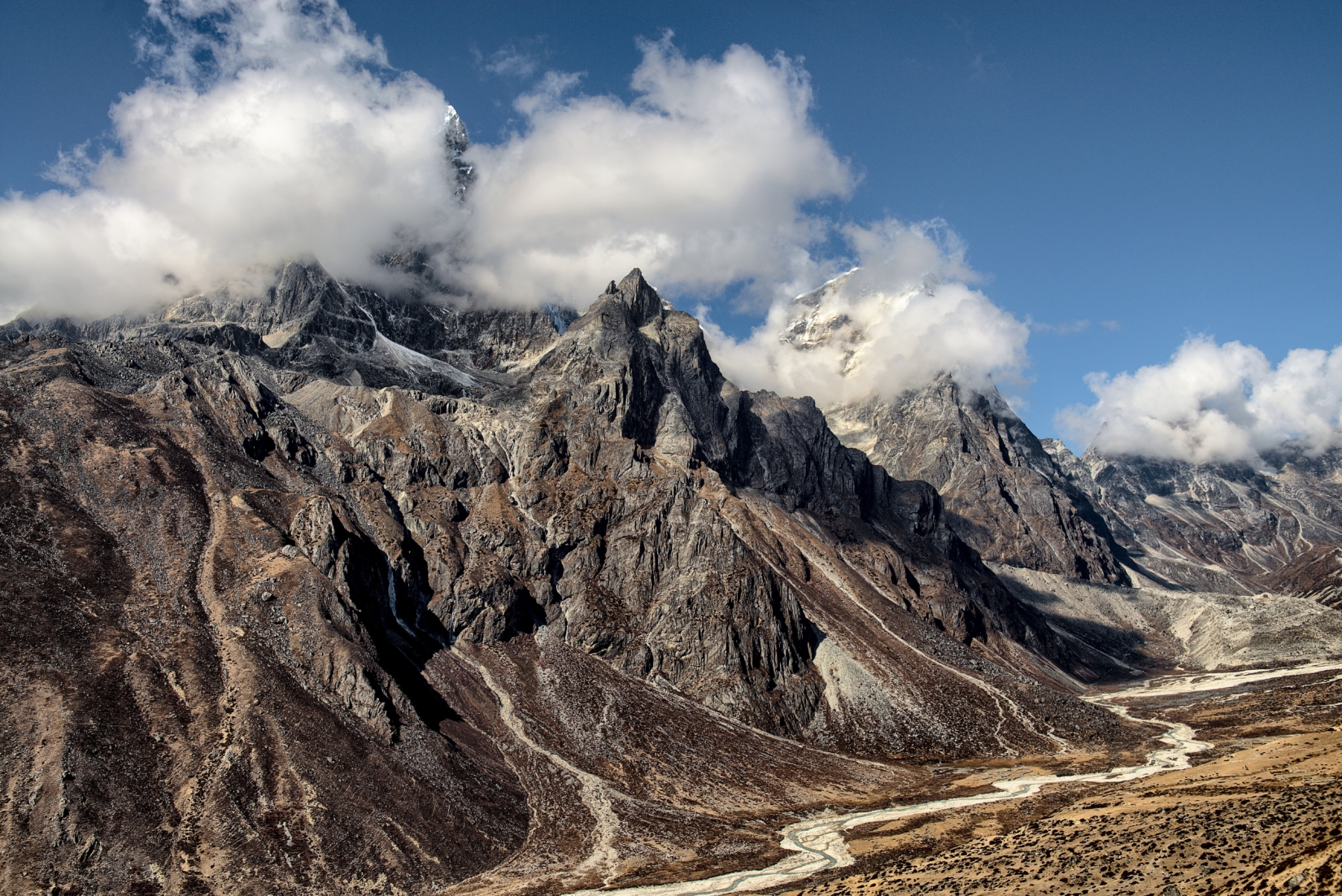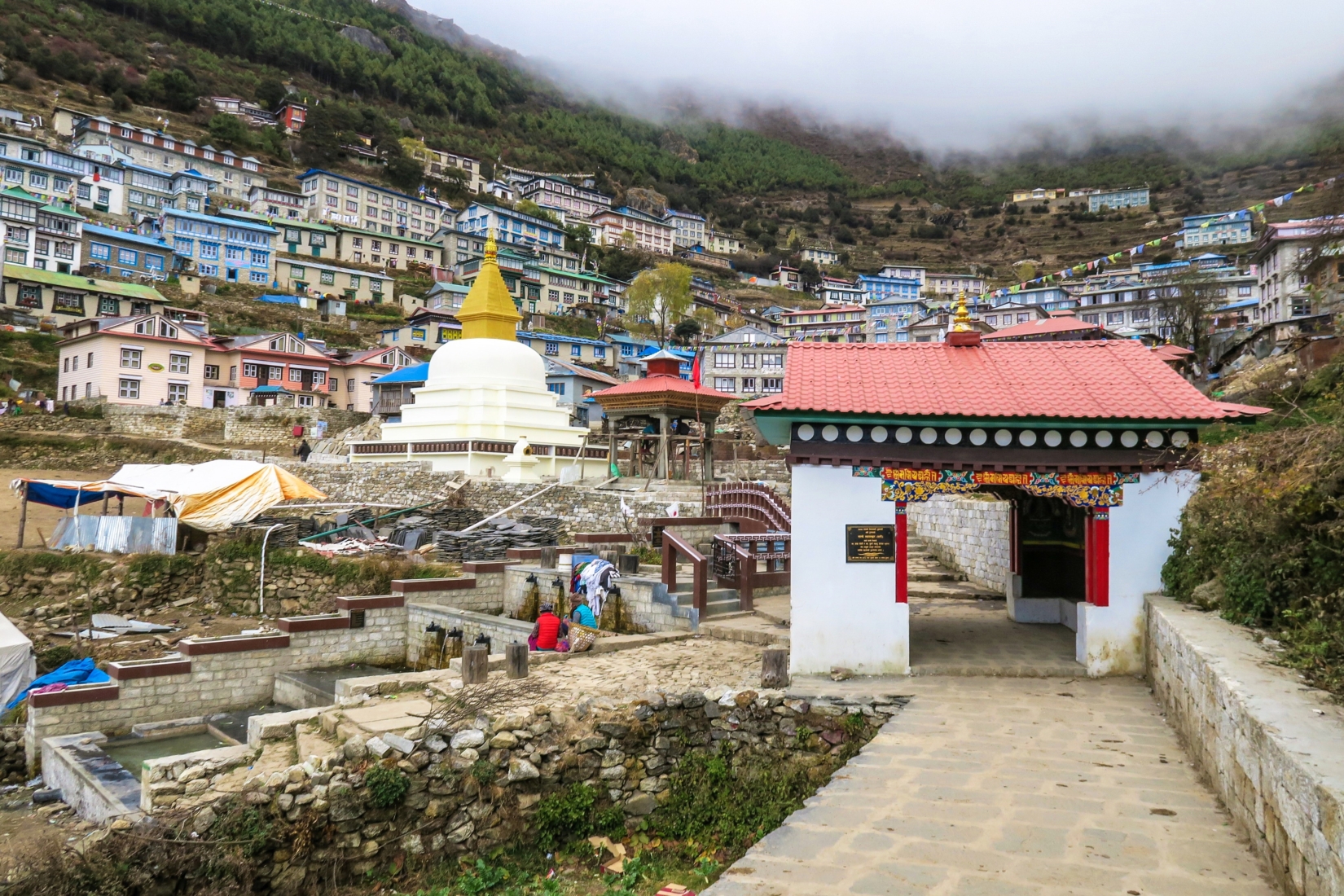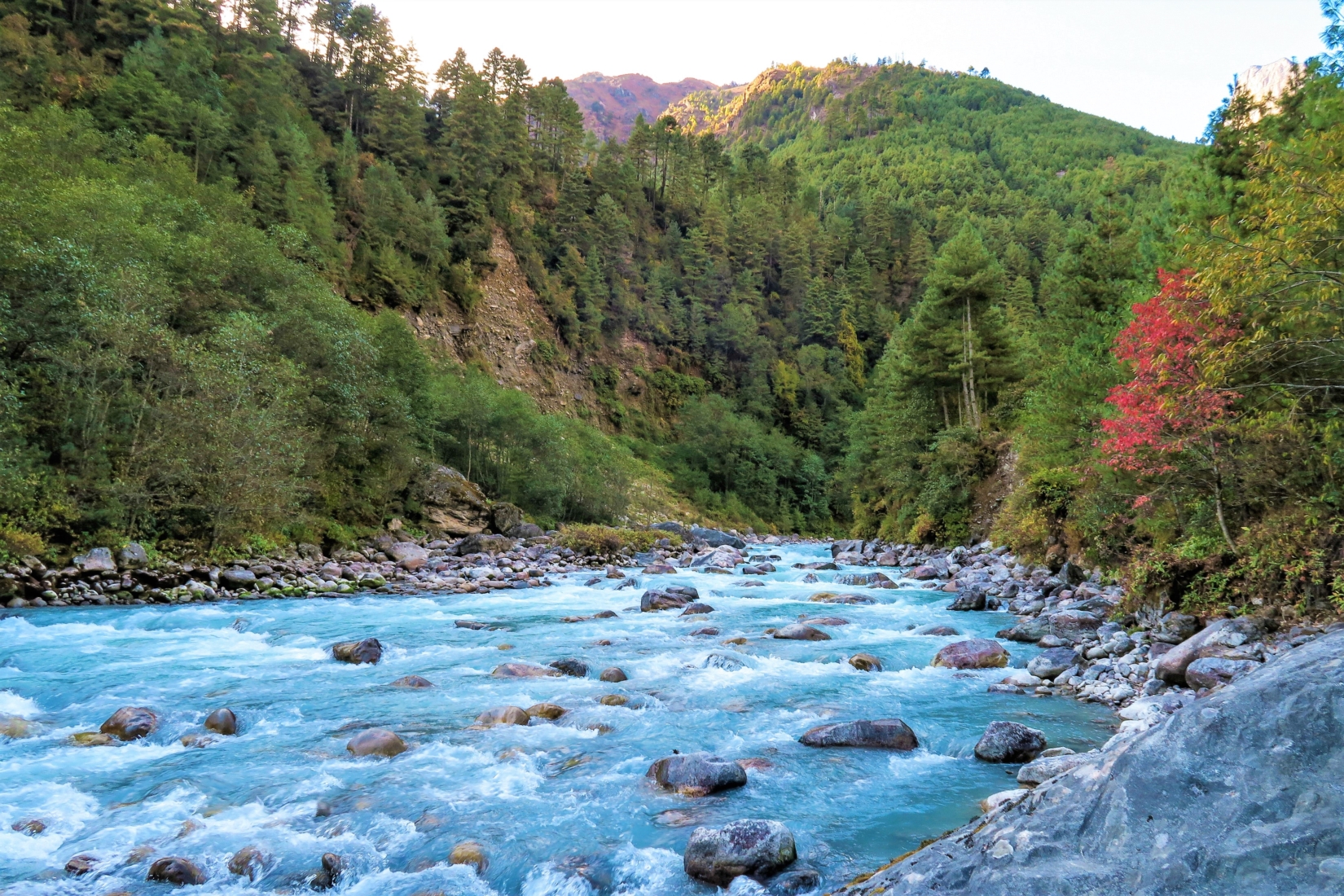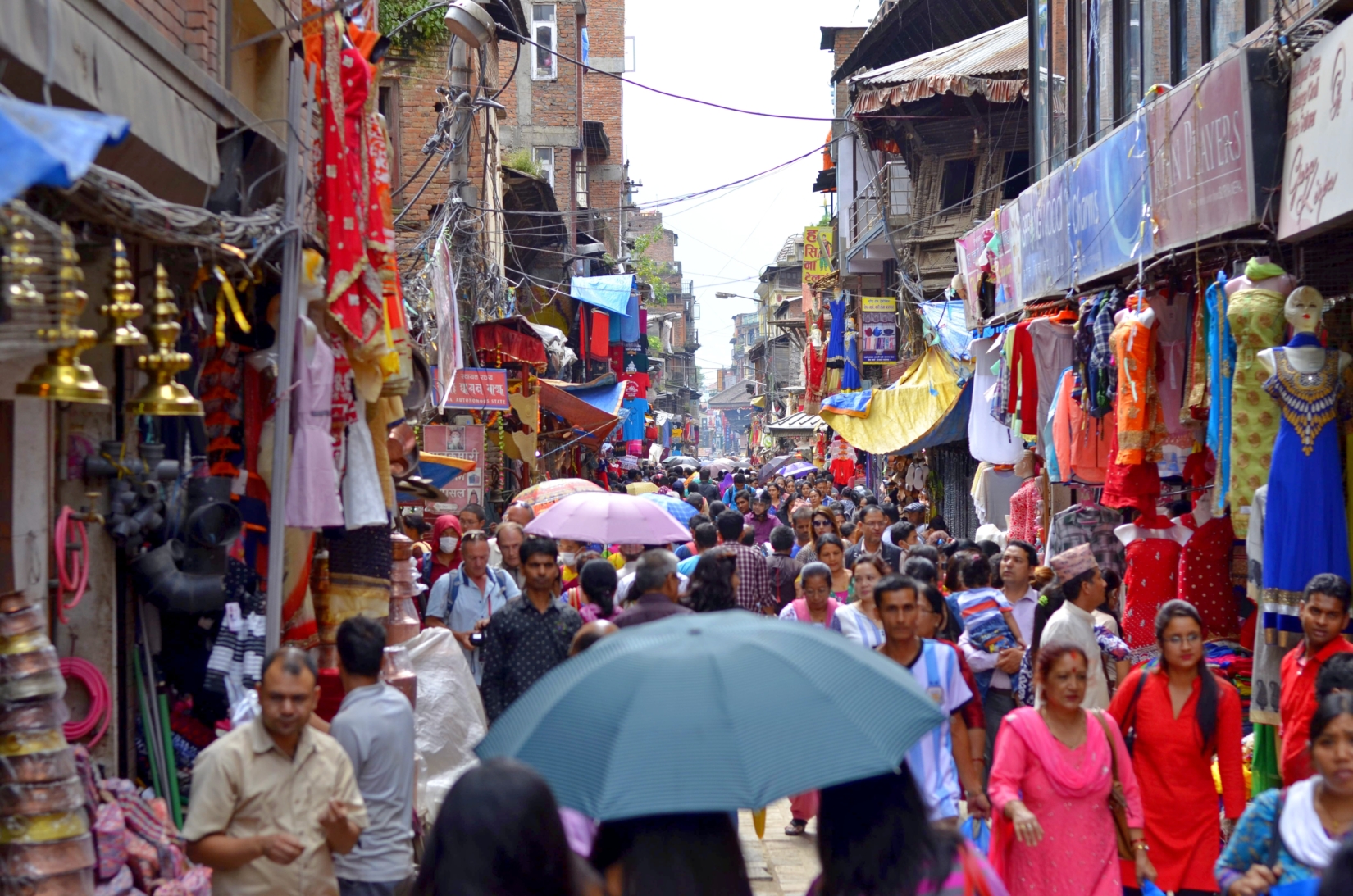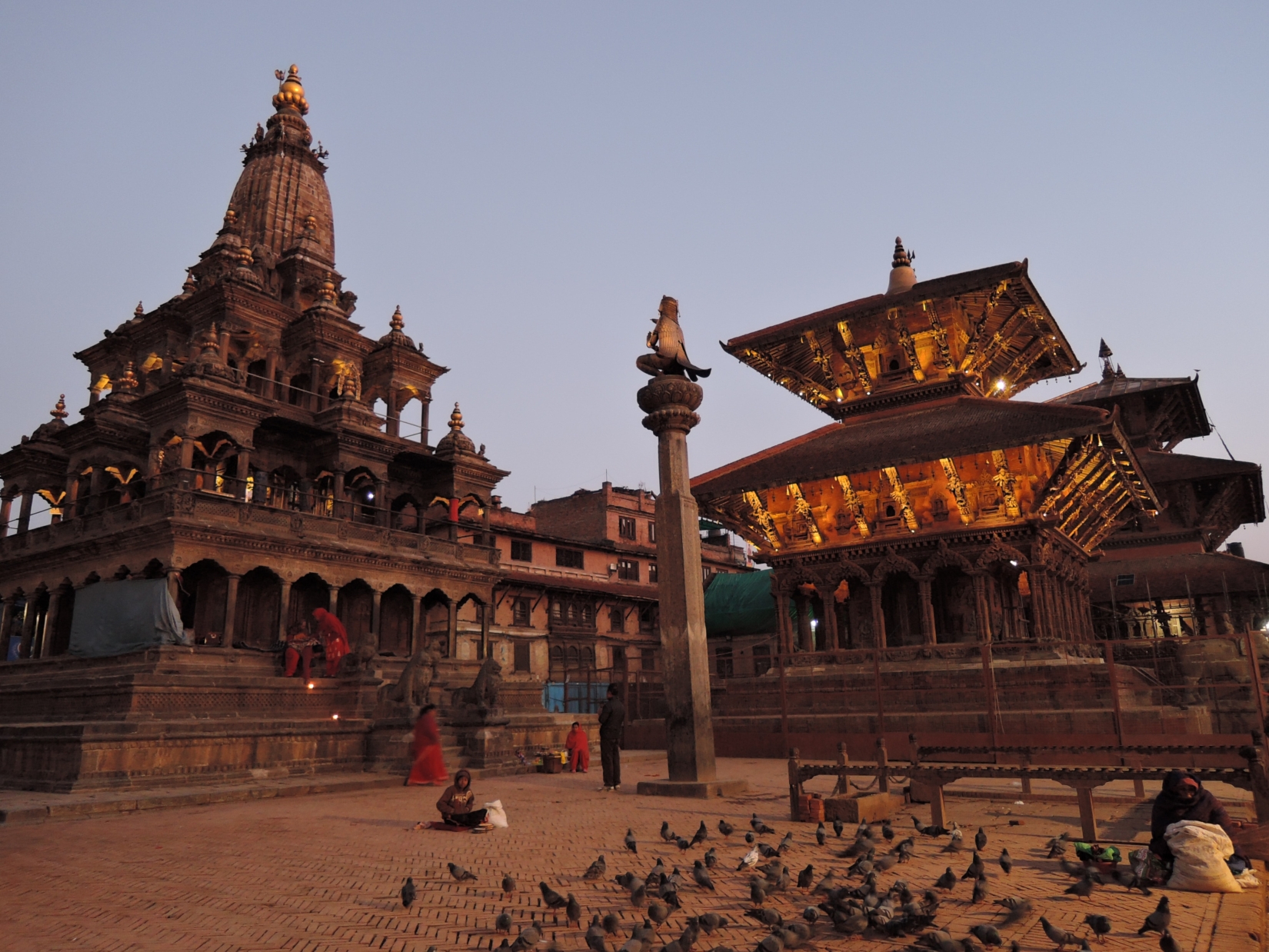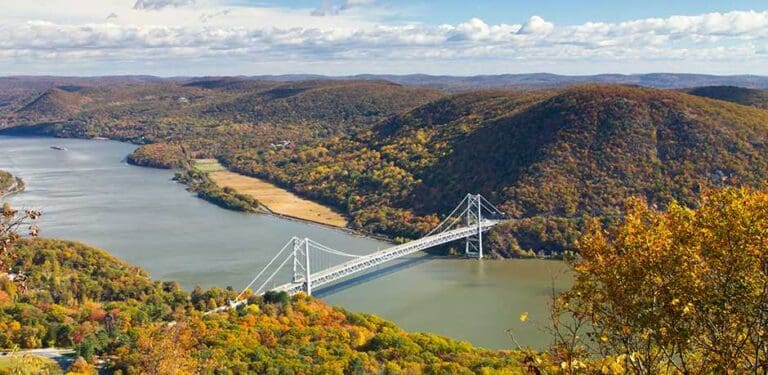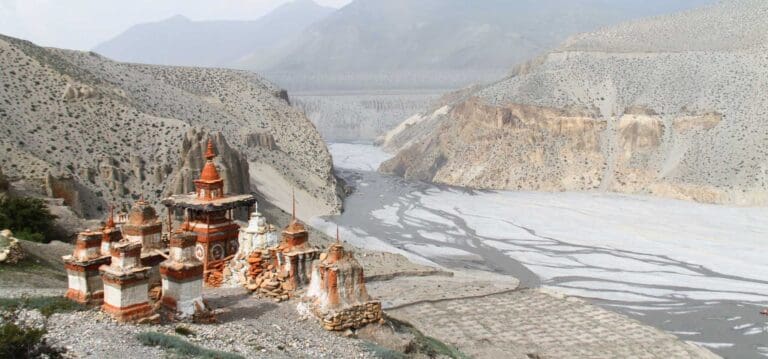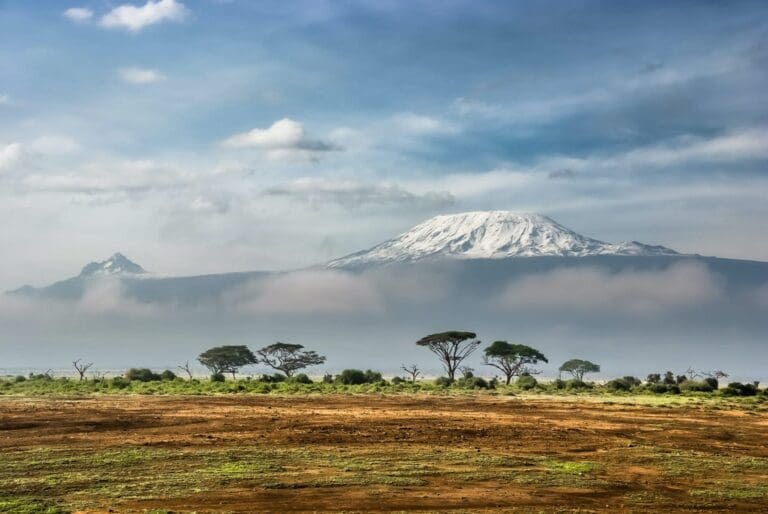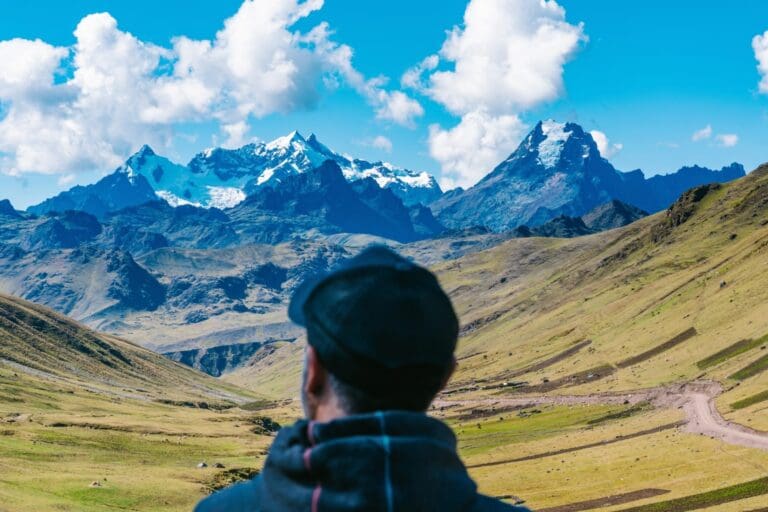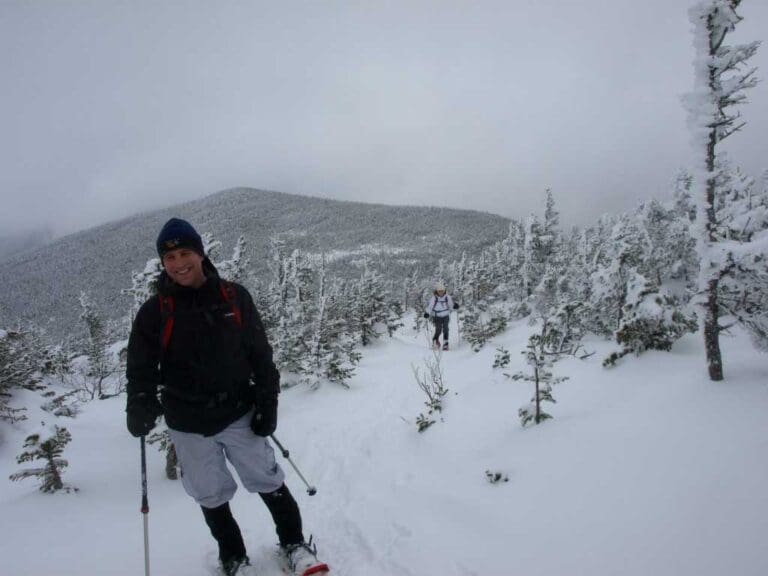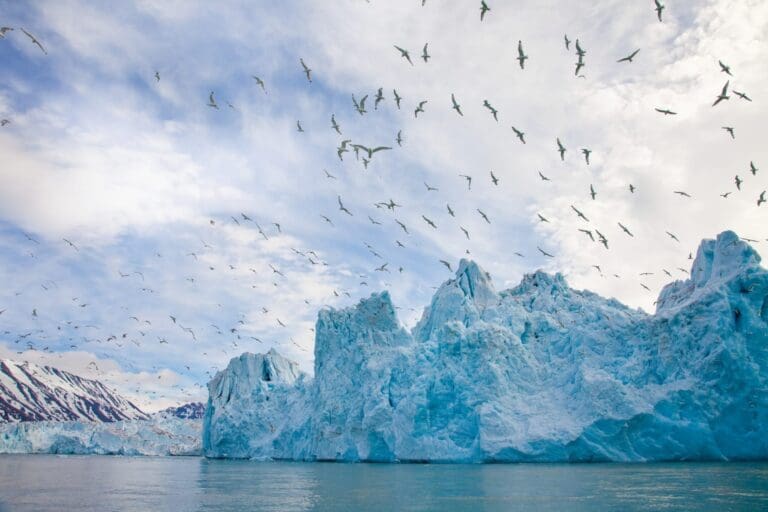Everest Base Camp Trek – 13 Things to Know for Your Trip in 2025
Just a mention of the Everest Base Camp Trek (EBC) in Nepal is usually enough to stir the soul of hikers all over the world. Thousands of aspirational ramblers have gained valuable experience on this Himalayan route. Some see this hike as a rite of passage for all true trekkers. Others go on this trek because it’s a ticket to the soaring roof of the world, where an up-close encounter with the highest summit of all awaits. The Everest Base Camp in Nepal itself sits at an impressive 17,598 feet (5,364m) high, but more on its impressive heights later on.
Whatever your reason for wanting to strike the Everest Base Camp Trek from the bucket list this year or the next, this guide can help in your pursuit. It will run through all the basics of this iconic trekking route between Namche Bazaar and EBC in Nepal, detailing the best time of year to go, what sort of challenges can be expected along the way, what trekking gear you’ll need on such a trip, and so much more. Find answers to the most frequently asked EBC Trek questions here. Dive in!
Our experience on the Everest Base Camp Trek
Like many, we began offering the trek to Everest Base Camp largely because of its reputation as one of the most extraordinary adventures on the planet. As soon as our team set foot on this legendary path we could instantly see why it was the case. Travelers of all stripes, all nationalities, join together on this true Himalayan adventure. The EBC Trek has the feel of a true expedition as you fly into the small airport at Lukla and take your first steps on the wooded trail towards the small village of Namche Bazaar.
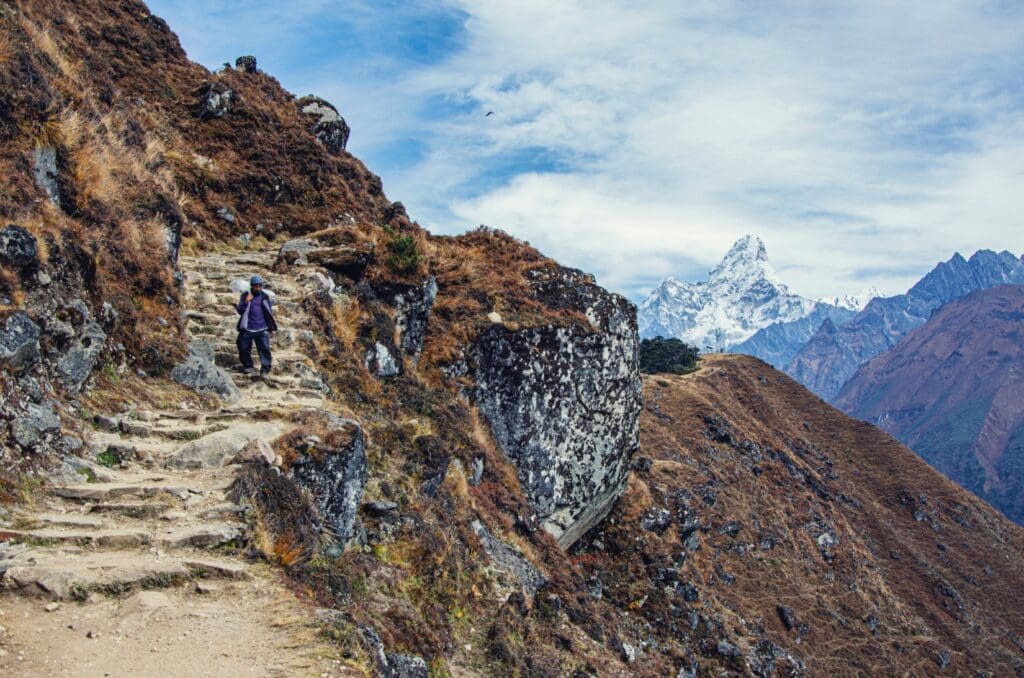
For me, Nepal is unlike any country I have visited. On my visit to this culturally rich and diverse nation I felt like I had entered into a new world. With the influences of both Buddhism and Hindi, the capital city of Kathmandu provides a window into the beautiful culture and history of the Nepalese people and bags you to explore more of this remarkable country.
What’s in this guide?
- Where is Everest Base Camp (EBC)?
- History of Everest Base Camp
- How long is the trek to EBC?
- Is it worth it? Things to see & costs
- How hard is the trek? Terrain, elevation, and altitude
- Food on the Everest Base Camp Trek
- Accommodations on Everest Base Camp
- When’s the best time to go? Temperatures & weather
- What gear and equipment should I pack?
- Should I use a porter service?
- Getting there
- Travel visas and permits
- A typical Everest Base Camp Trek itinerary
1. Where is Everest Base Camp (EBC)?
There are actually two base camps for Everest trekking: the North Base Camp in Tibet and the South Base Camp in Nepal. The Nepalese camp in the Khumbu region is the Everest Base Camp that most people talk about, and the endpoint of this legendary trek. It’s tucked away at the end of a long valley that carves through the Himalayas after splitting at the Sherpa village of Dingboche. The formidable Khumbu Icefall – the first obstacle for those attempting a summit push to Everest – begins right on the doorstep of the camp, leading up to the Western Cwm (also known as the Valley of Silence) and the peaks of Lhotse and Nuptse.
2. History of Everest Base Camp
Climbing on Mount Everest started at the beginning of the 1920s, when a team led by George Mallory (who some think may well have been the first person to reach the summit) came to map out the north face. However, Mallory and his team never established a permanent base camp on their trips, and the north route was all but shut when China invaded Tibet in 1949.
Then came the conquering expedition of Edmund Hillary and Tenzing Norgay. It took place on the south slopes in Nepal. Hillary and Norgay realized it made more sense to have a place to store supplies at the base of the mountain rather than trek the whole length of the Khumbu Valley whenever they needed gear. Thus, Everest Base Camp was born.
3. How long is the trek to EBC?
The Everest Base Camp Trek may be the single most famous trek in Asia, and arguably the world. Some say its booming popularity is the trek’s own worst enemy, and it’s true that the trail has suffered from overcrowding and some pollution in recent years. However, nothing can take away from the thrilling sense of adventure that comes with climbing towards the edge of the world’s highest peak. That reaches a fever pitch in the early days of your hike, when you’ll catch a jaw-dropping broadside of Mount Everest from a lookout on the south side of Ama Dablam.
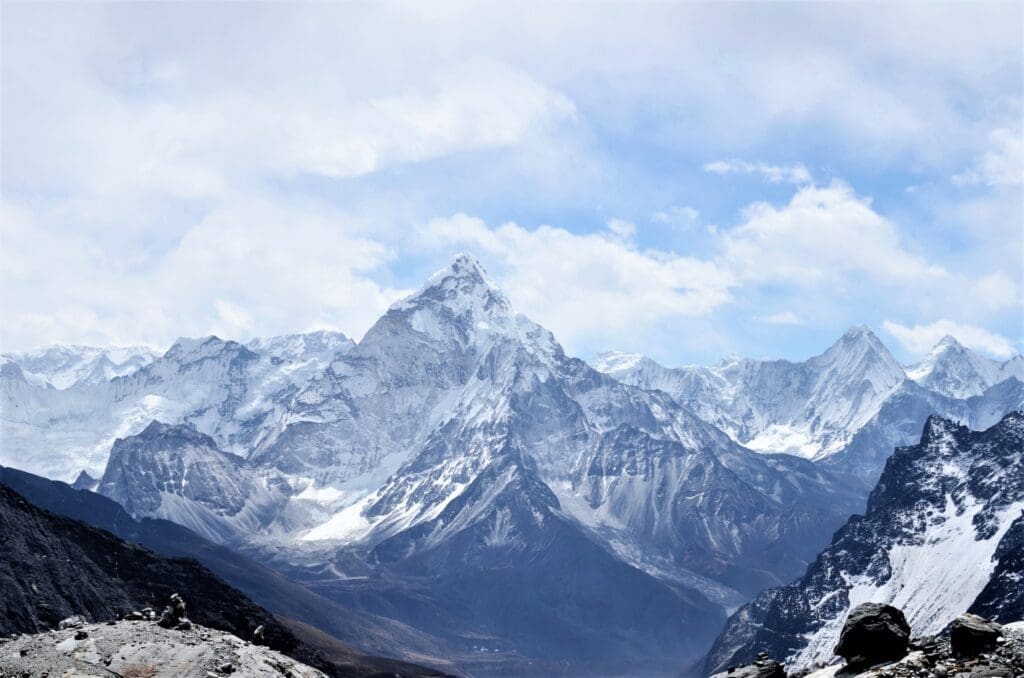
Distance
The rewards of the trek don’t come so easily. EBC is a high-altitude path that requires considerable acclimatization over a good distance. You’ll typically need 12-14 days of full-on trekking (that’s right, your “rest days” involve walking too!) to complete the 80-mile (130km) roundtrip that starts from Lukla.
This distance is roughly divided into individual daily sections of 8-10 miles (13-16km), but the reason the whole adventure takes so many days is because it needs to be broken down into bite-sized chunks due to the altitude with acclimatization and rest days mixed in. Most itineraries will leave enough time to complete each leg on any given day at well below the average trekking pace.
Walking times
Most walkers find that they hike a maximum of 8 hours each day, though that can go up a little when you reach the higher altitude sections of the route – not just because of the physical challenge, but because you’ll be stopping often to take in all the breathtaking views!
4. Is it worth it? Everest Base Camp trip highlights & costs
The joy is in the journey here, as you trek further up to gaze from the roof of the world. Some of the best sightings of the famous Everest arguably come during the Everest Base Camp Trek itself, from various lookout points along the way. These magnificent views combined with mystical monasteries and Sherpa villages offer a host of intriguing trip attractions en route. For me, the best highlights of the trek are:
Pricing
With so much natural beauty to be experienced, how much will it set you back? When it comes to pricing, costs of the Everest Base Camp Trek can range widely but the best all-inclusive tour packages start at around US$4,295. If this number is giving you sticker shock, don’t let it deter you from the trip of a lifetime to Nepal, because my team at The Explorer’s Passage is always here to work with you and your preferences to craft a trip that fits your needs.
5. How hard is the trek? Terrain, elevation, and altitude
So just how difficult is the trek to Everest Base Camp? To answer this, you’ll have to consider the terrain and heights of EBC. Your physical fitness also plays a factor in the perceived difficulty of this adventure. Based on our Trip Activity Level Guide, we classify this trek as an advanced level, but you may be glad to know that no technical training or mountaineering experience is required.
Not sure if this Himalayan adventure is right for you? Contact us and we’ll walk you through details on the physical demands, recommended training, and more so you can make an informed decision.
Terrain
The Everest Base Camp hike graduates from the alpine surroundings at the south end of the Sagarmatha National Park to the scree-covered ridges of ancient moraines in the final push towards the trekking finish line. The first sections are easier in terms of terrain but more difficult because they are constantly steep. You’ll notice this in the ascent from Lukla to Namche Bazaar, and then again from Namche Bazaar to Tengboche. The path there is largely shaded by pine and ironwood forests, muddy when wet but also interspersed with rocks wedged into the ground. You’ll stroll across suspension bridges to cross most rivers.
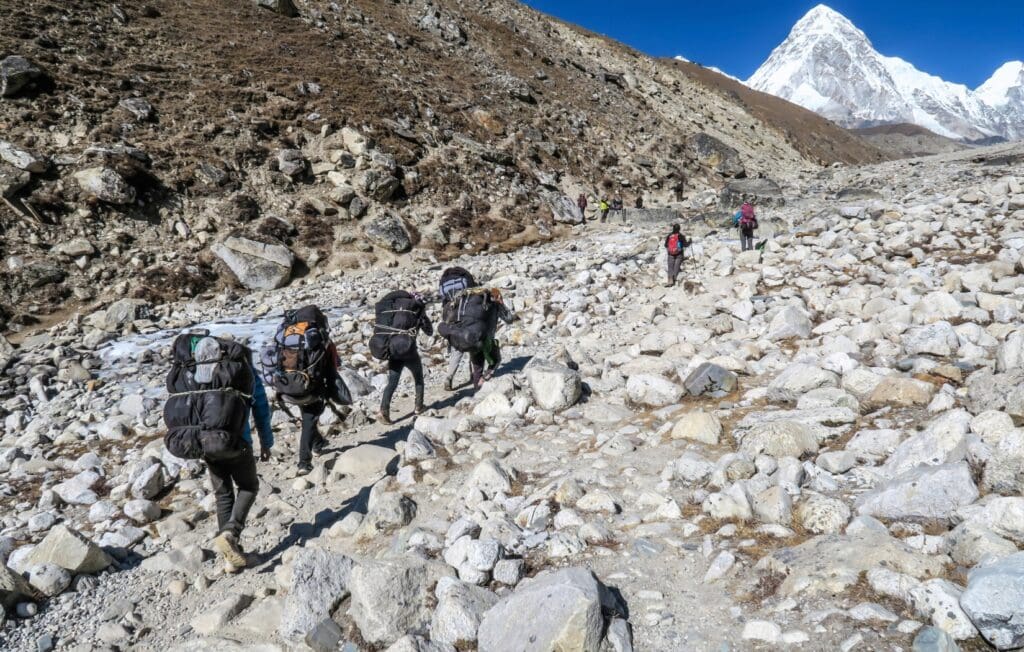
After the first few days of your trip, you’ll see that the trekking path levels a little as it skirts a wide, flat valley with the mighty Himalayas looming on all sides. This is where you lose the tree cover for good, so be sure to have the sunscreen handy. It’s rock and grit underfoot until you near Gorak Shep. There, the route sort of merges with the great pebble and rock moraine at the end of the Khumbu Icefall. It’s normal to find snow coverage in those parts, especially if you’re trekking between November and March.
The terrain along the Everest Base Camp trail changes with the seasons, so it’s important to know what to expect. During the dry season, the trail is generally clearer, with less mud to contend with. However, rocky sections can still be slippery, so tread carefully. In the winter months, snow and ice can make parts of the trail, especially near the Khumbu Icefall, much more challenging. By understanding how the conditions vary, you can make sure you’re ready for whatever nature throws your way.
Elevation and altitude
How high is Everest Base Camp? Well, altitude is commonly travelers’ biggest challenge on this tall trek. As mentioned before, you’re going to have to clock up a hefty 17,598 feet (5,364m) above sea level. You’ll manage 9,400 feet (2,865m) at the EBC trailhead, which is taken care of by the flight from Kathmandu to Lukla. The rest is up to your legs. You’ll knock out about 1,800 feet (549m) by climbing to Namche Bazaar. After that, days on the trail (not including acclimatization days) average around 1,200-1,600 feet (366-488m) in elevation gain, though it’s on less-steep paths once you cross the tree line around Tengboche. Everest Base Camp elevation is no joke and can be difficult for some.
Acute Mountain Sickness (AMS) – the mildest form of altitude sickness – is certainly a risk here. It can affect anyone over altitudes of 8,000 feet (2,438m), but usually has severe impacts at higher levels. Since the EBC Trek reaches altitudes of more than double the height where AMS can possibly kick in, there are usually two full acclimatization days planned in – one in Namche Bazaar and the another in Dingboche or Lobuche. These days aren’t for resting but instead used to climb high and then descend to sleep at lower altitudes, a common practice that’s known to help the body acclimate to conditions at higher elevations.
Don’t be surprised if your Everest Base Camp Trek guide constantly reminds you to drink enough water as it’s another way to combat AMS. Once you hit the higher altitude parts of the path, you can typically expect your guide to be prepared with a supply of oxygen, should you need it. You might also want to consider packing an AMS medication like Diamox on your trip to Nepal.
Even seasoned alpinists find the trip a challenge and lots of climbers struggle with Acute Mountain Sickness. Just remember: no pain, no gain on this most incredible of trails! On this trip, you’ll see the sheer majesty of the Nepalese Himalayas up close and scale to viewpoints that are simply some of the best you’ll ever hike to.
6. Food on the Everest Base Camp Trek
All that trekking is going to work up a serious appetite, you can be sure of that. Thankfully, EBC teahouses tout some decent grub for when it’s time to refuel. Don’t be surprised to find that the menus are virtually identical the whole way along, even if the dishes themselves vary greatly with the whims of different chefs up and down the trip route.
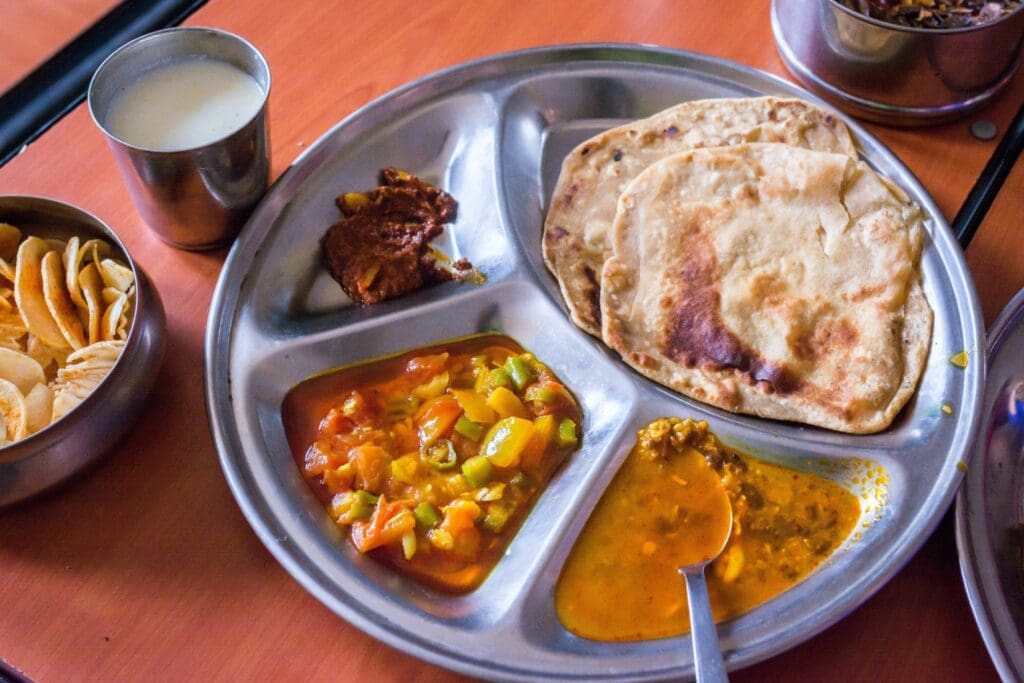
Common dishes include:
Is your mouth watering yet? These dishes will surely give you the energy you need to power through the trek.
7. Accommodations on Everest Base Camp
Apart from the hotels in Kathmandu at the start and at the end of your quest, all of your accommodations on the Everest Base Camp Trek route are likely to be teahouses. Don’t let the name fool you – these aren’t just places to stop for a hot drink. They’re actually full-fledged bed and breakfast lodges purposely designed to host travelers.
EBC teahouse accommodations in Nepal are simple, clean, and comfortable. The general rule is that the quality is better towards the start of the trek, where the teahouses are both larger and better supplied. Rooms are usually minimally decorated. They have wood-paneled or plastered walls and, for the most part, a single window, along with low-rise beds with foam mattress pads. Some have in-room heating, while other teahouses are warmed by a central stove that’s kept alight in the evenings. Some places offer hot showers, but most only offer cold. Electrical charging of devices is on offer at most places, though that could come at an extra cost.
For more details on accommodations, check out our Everest Base Camp tour page.
8. Best time to trek to Everest Base Camp
There are two main seasons for trekking to Everest Base Camp in Nepal. The first is in the spring (late March to May) and the second comes in the autumn (late September to November). Both high seasons essentially straddle the main monsoon season, offering more dryness and clearer skies without too much precipitation. Although, it’s important to note that zero rain can never be guaranteed this high up.
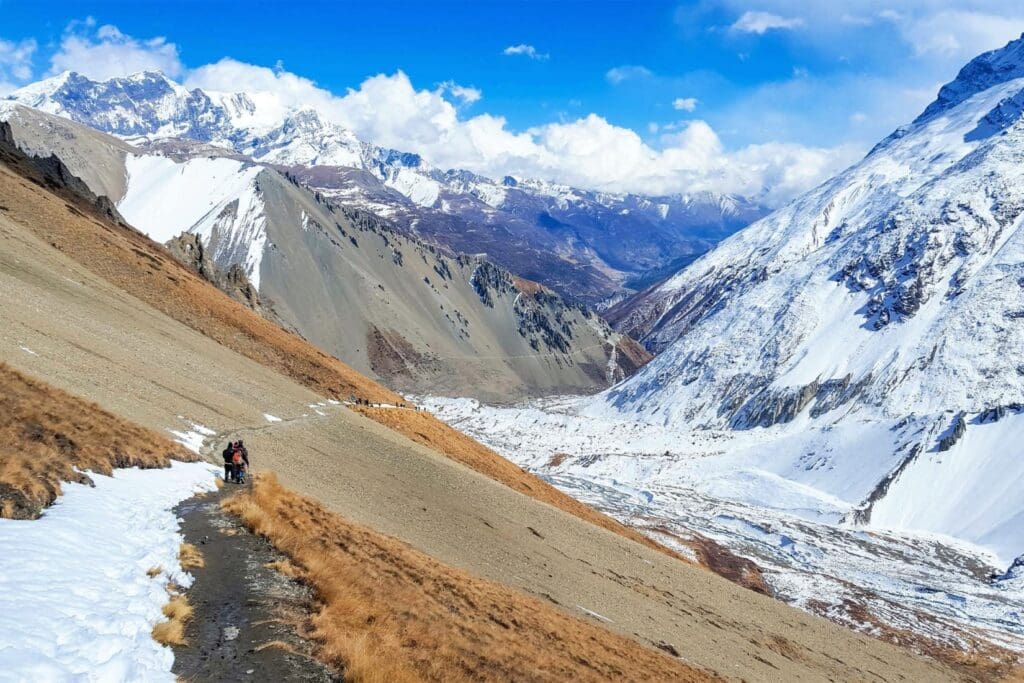
Here’s a breakdown of the best months to go:
December to February is the low season for one main reason: Snow. Temperatures during these colder days drop to an average of 25 degrees fahrenheit (-4℃) in the middle of the winter season, and that’s in Namche Bazaar, one of the lowest points on the trek. It’s not ideal for overnight hikes that rely on teahouses made of plywood walls. That said however, completing the EBC certainly isn’t impossible at this time, it just presents unique challenges. You’ll need way more thermal layering, special trekking equipment to handle the snowdrifts, and probably extra days to complete the trek. The upside is that winter days offer very clear skies and there’s rarely a big crowd on the trail.
9. What gear and equipment should I pack?
When considering what to pack for your trip, it’s good to know there are strict limits on the weight each passenger can take on that initial flight from Kathmandu to Lukla. What’s more, there are limits on the size and weight of bags that you can ask porters to shuttle up and back to EBC for you. Due to these limits, you’ll want to think very carefully about what to bring for this once-in-a-lifetime trek. As a general rule, it’s good to stick to about 22-33 pounds (10-15kg) in your main pack, with a small 30-litre day pack on the side to carry the things you’ll need on the trail.
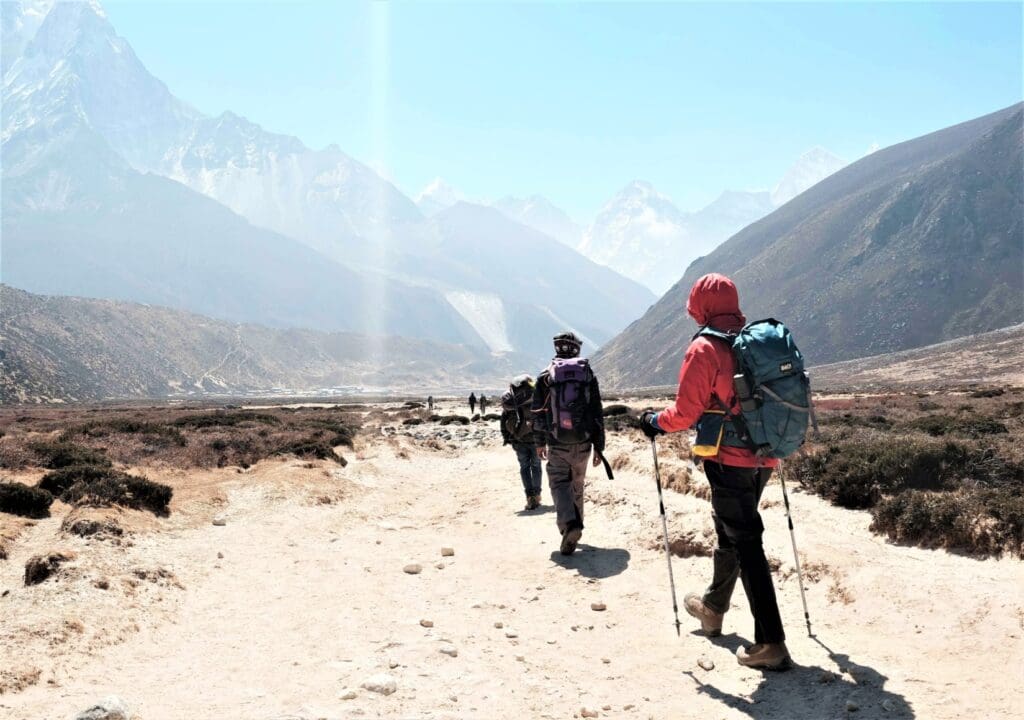
Layers are always key in the Nepalese mountains, as temperatures can warm up considerably during the day and drop suddenly at night. You’ll want to be able to add and remove fleeces and thermals on the upper body to match the fluctuating temperatures. For the lower body, I’d recommend bringing both shorts (mainly for the lower elevations of the trek where it can be positively balmy) and sturdy trekking pants (for higher elevations), backed up by good thermal-rated underlayers.
Waterproofs are also essential for your trip. Rain and snowfall can come without warning in the high Himalayas, and weather patterns on the EBC Trek have little respect for the so-called high season, so inclement weather can happen any time of the year. Winter trekkers will need to plan a little more, though, in order to deal with all that ground ice and much colder conditions.
On top of that, you’ll need to think about all those hiking essentials. Good boots, a pair of hiking poles you feel comfortable with, both a wool hat and a sun hat, strong sweat-resistant sunscreen, headlamps, and a decent-capacity water bottle should all be on your packing list.
That’s just scratching the surface, but The Explorer’s Passage will make sure you’re fully prepared for your chosen season on the EBC route when you plan with us – just ask us for a full packing list!
10. Should I use a porter service?
Put simply, porters are essential on the trek to Everest Base Camp. They’re very much the superheroes of the expedition, transporting the bulk of most trekkers’ gear and equipment from camp to camp outside of Lukla or Namche Bazaar. For larger groups of trekkers, some operators will utilize animal support for transport assistance. Porters will carry one standard rucksack or duffle bag per hiker. Usually, that’s limited to a weight of between 22-33 pounds (10-15kg) per person, though it can be lower or higher depending on the Everest Base Camp tour you pick. That leaves you to only carry what you need for the day. As mentioned above, a 30-litre pack typically works best, just enough for water, snacks, fleece and waterproof layers, your camera, and sunscreen.
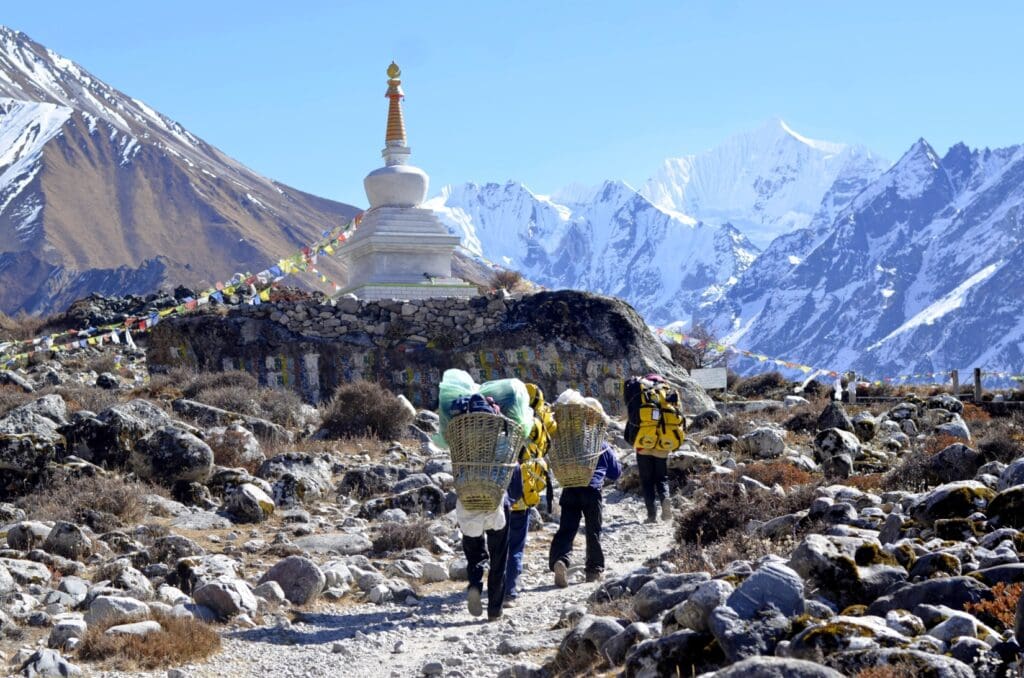
I do, occasionally, see people who choose not to engage a porter but that’s a tough task. Ultimately, when you’re deciding whether or not porter service is right for you, remember that the Mt. Everest Base Camp hike involves several days of walking at altitudes over 12,000 feet (3,658m) above sea level, on tricky terrain to boot. It’s a challenge even without 44 pounds (20kg) of gear strapped to your back!
11. Getting there
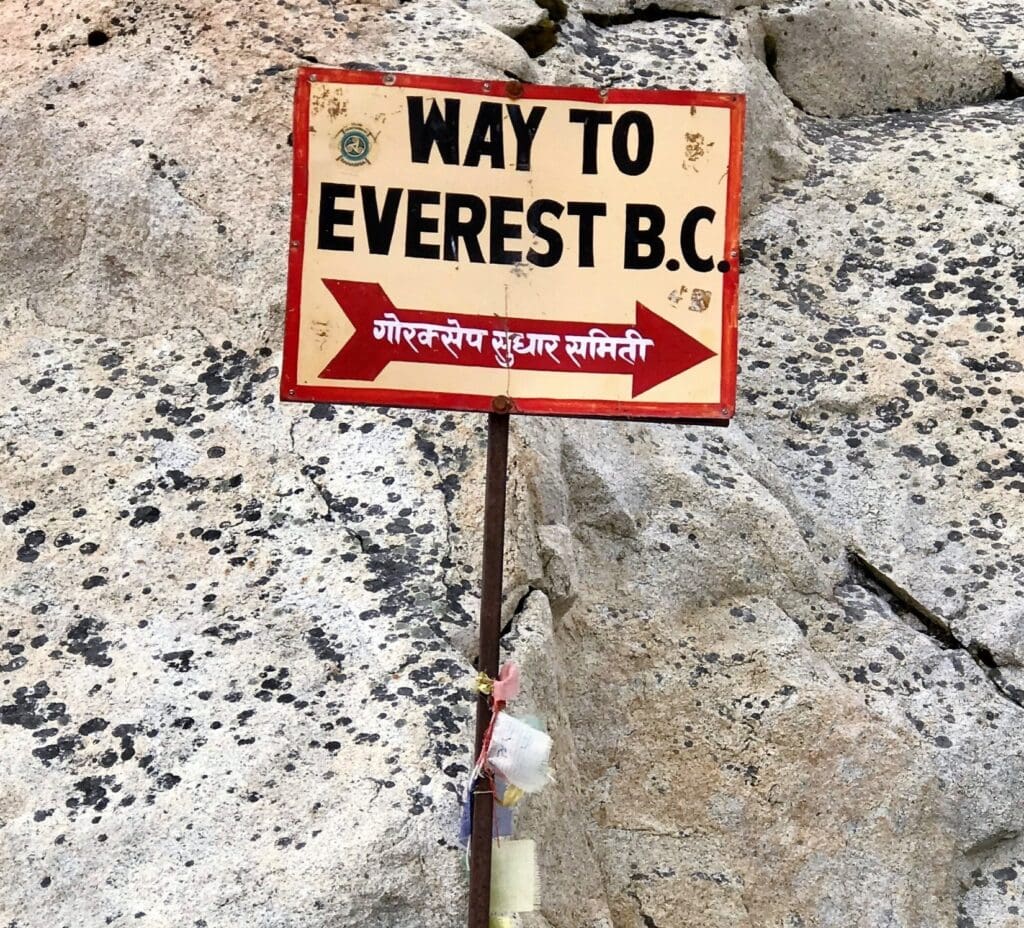
So now you know what this infamous excursion holds and you can’t wait another moment to go, how will you get there? The trip to the start of EBC is a journey in itself. You’ll first jet into Kathmandu, the heady, rickshaw-rattling capital of Nepal. It’s an amazing place, filled with UNESCO temples and the aromatic spices of Nepalese curry houses. We usually recommend that travelers arrive at least a couple of days before they are due to set off for the trek, not really to help with altitude acclimatization – Kathmandu is a relatively modest 4,500 feet (1,372m) up – but more for cultural acclimatization.
Doing that means you’ll have time to score any last-minute gear you might have forgotten for the hike itself. Kathmandu has plenty of decent outfitters that offer good deals on key items like down sleeping bags and thermals. It also means you’ll get to see some of the great cultural treasures of the country, including the tower-topped temples of Durbar Square and the colossal Boudhanath Stupa, which is usually writhed in prayer flags dancing in the wind.
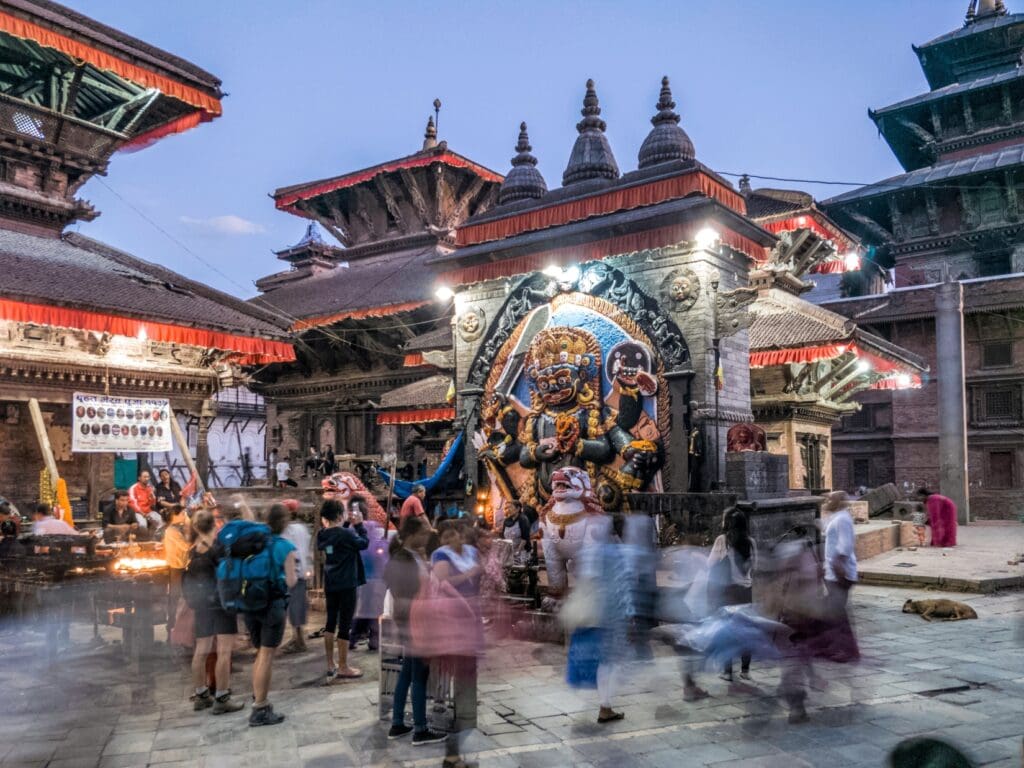
After Kathmandu, there’s a short-haul flight from the domestic terminal of Kathmandu Airport that takes you all the way to the trailhead of Everest Base Camp in Lukla. The plane ride is relatively quick – about 30 minutes total – and pretty spine-tingling, especially as the landing strip on the Lukla side sits a whopping 9,300 feet (2,835 meters) above sea level on a precipitous mountain plateau. It’s not a flight you’ll forget in a hurry!>
12. Travel visas and permits
Some nationals of specific countries can enter Nepal without a visa, but most travelers will require one. For those who do, entry visas for tourists traveling into Nepal are generally available in advance or upon arrival at Tribhuvan International Airport and various land borders. If you’re unsure of which category you fall into, use this easy tool to double check your entry and health requirements.
When it comes to permits, there are no permits for the Everest Base Camp Trek itself, at least not like there are for the Inca Trail and some other bucket-list hikes elsewhere on the planet. However, there are limits to the number of guests teahouses can host (so it’s important to book early) and you will be passing through some regions and conservation areas that require visitors to obtain special passes, but no need to worry as The Explorer’s Passage will handle all of these details for you. Just make sure your travel documents and essentials are still valid.
For the route to Everest Base Camp from Lukla, there are two key documents that we will secure for you:
It is important to note, those looking to do the longer, 20-day extension to the EBC Trek, going from Kathmandu by road and then onwards by foot from Jiri, will also need a pass for access to the Gaurishankar Conservation Area.
13. A typical Everest Base Camp Trek itinerary
The temple-topped, bazaar-busting city of Kathmandu is likely to be where you enter Nepal. You’ll definitely want to take some time out of your trip to explore this amazing city first. Then, it’s time to head northeast to start your Everest Base Camp hike. Most travelers do that with a flight to Lukla and then walk from there, but it’s also possible to trek all the way if you have the time. Still, most Everest Base Camp Trek itineraries officially start at Lukla airport.
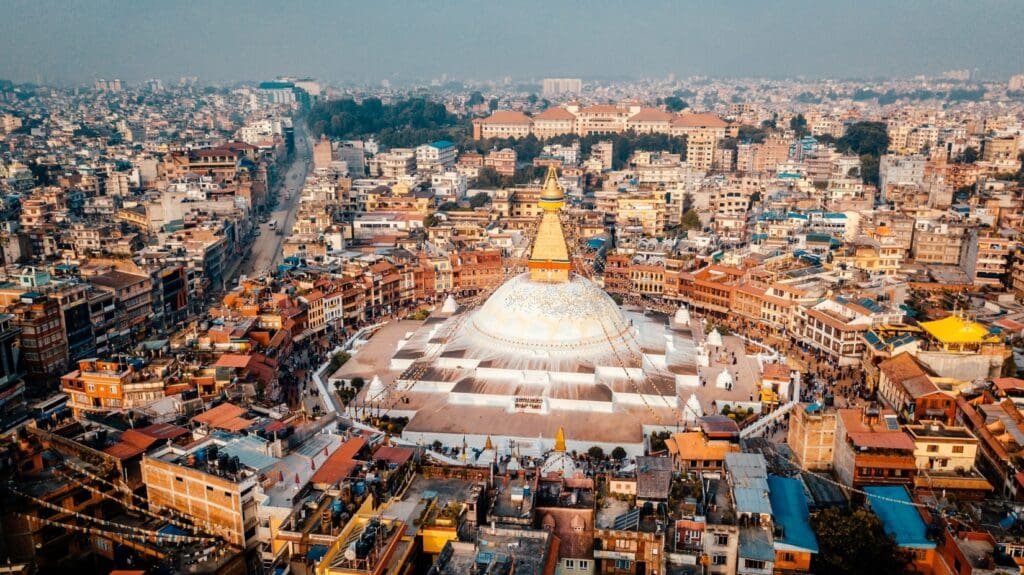
For a customized itinerary, connect with us to craft your ideal trip.
Other Variations of the EBC Trek
The main up-and-back EBC Trek outlined above is by far the most popular route to the fabled camp on the slopes of Mount Everest, but there are also other options. Take the Three Passes Trek. It’s a circular romp that encompasses a trio of the highest traversable passes immediately around Everest itself, starting with Kongma La (18,175 feet) before pushing on through Cho La (17,782 feet) and then Renjo La (17,585 feet).
This is a considerably more challenging undertaking than the classic Everest Base Camp Trek, usually reserved for hikers with high-altitude experience. The reason? You spend multiple days walking at heights of over 16,400 feet. There’s also more chance you’ll have to contend with snowpacks – especially late and early in the main trekking seasons (April and November). The reward is a chance to explore all the nooks and crannies of the Khumbu Region, with visions of the gleaming Gokyo Lakes and remote Sherpa hill villages along the way.
Other variations include the dedicated Gokyo Lakes Trek, which involves portions of the Three Passes Trek at Cho La to offer a fuller visit of the Gokyo Valley before re-joining the route to base camp at Lobuche.
This trip guide is just a taste of what you should know before embarking on the remarkable trek to Everest Base Camp. For more details on general trip costs, accommodations, and more, check out the specifics on our Everest Base Camp tour page.
Better yet, if you have more questions on hiking to Everest Base Camp or need help planning your trip to the Himalayas, let’s connect! Our knowledgeable Adventure Consultants would love to hear from you so contact us and let us show you what’s possible.
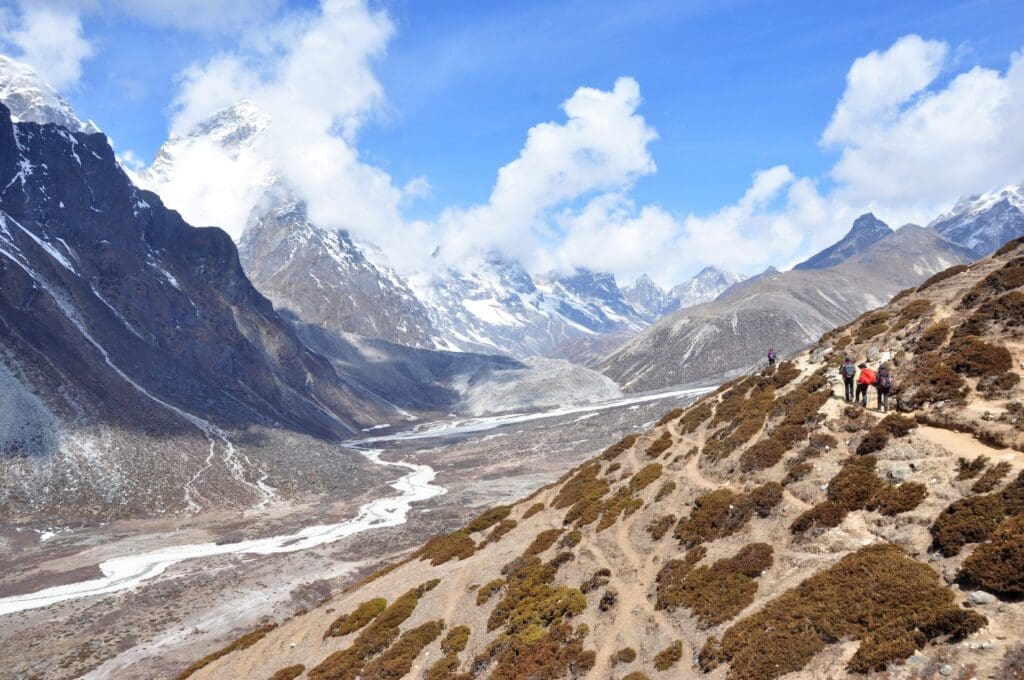
Why travel with The Explorer’s Passage?
Experience the Everest Base Camp Trek with the best tour operator in Nepal. Our guides have been leading adventure trips in the Himalayas for over 30 years and are experts of trekking to Mount Everest Base Camp. They are also native to the Khumbu region of Nepal, the home of the Sherpa community, so you know you’ll enjoy an authentic experience.
We pride ourselves on delivering extraordinary tours based on travelers’ needs and are humbled by our guests’ testimonials. In fact, our dedication has earned us a 5-star rating on Tripadvisor, and awards by Travel+Leisure Magazine and Newsweek. Check us out and discover why so many travelers worldwide choose us. My team and I would love for you to join us on the trek to Everest Base Camp or any of our many other adventure trips!
I hope to go exploring with you soon!
Cheers,
Jeff
Jeff Bonaldi
Founder & CEO
The Explorer’s Passage
About Jeff Bonaldi
Jeff Bonaldi is the Founder and CEO of The Explorer’s Passage, a premier adventure travel company. His mission is to provide travelers with the opportunity to transform their lives and the planet through the power of adventure.
Learn more about Jeff’s story and his company HERE.
Share this amazing location!


